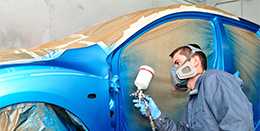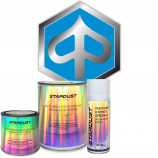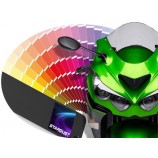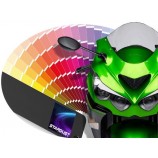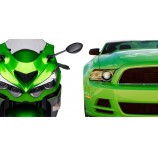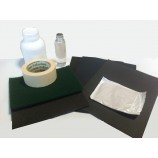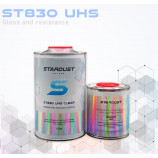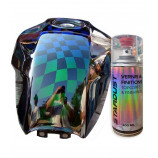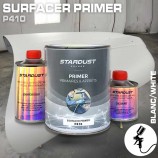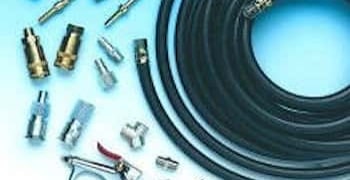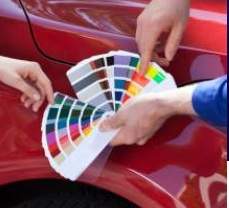The paint is applied to a scooter using a spray can or a paint gun. The paint has a specific shade, determined by the colour codes of Italian motorcycles, including those of PIAGGIO motorcycles. There are hundreds of references for PIAGGIO paints, which appear either as a colour code or a colour name. Either of these can allow you to order your PIAGGIO manufacturer's paint on our website.
Once you have your Piaggio code, go to the main product page of this category and simply select one of the available packaging options (aerosol or can). You will then need to send us the colour code by email after placing your order.
The paint available on our website is solvent-based. These are single-component paints, known as 1K basecoats, because they require a topcoat. These paints are supplied either ready-to-use or undiluted. In the latter case, the thinner provided allows you to dilute according to your preference (between 50 and 100%).
Aerosol versions contain the same type of professional paint. However, if you have a spray gun, we highly recommend choosing the canned version. An aerosol does not offer the same control as a spray gun, and from an economic point of view, aerosols are less efficient: most spray cans consist of around 75% gas and only 25% paint.
In this category, you’ll find all products related to painting your scooter. This includes primers, topcoats and consumables.
The products you may need include:
• sticky pad for dust removal
• 500-grit abrasive paper
• filling primer*
• bodywork topcoat
The motorcycle colour codes of the PIAGGIO brand
Depending on the shade, some paints are more transparent than others. This matters because the transparency affects how the final colour looks based on the background. This is a key aspect of bodywork paint. Most pearlescent and metallic colours are not fully opaque. The more pearlescent a paint is, the more transparent it tends to be.
To ensure you achieve a colour that matches the original Piaggio shade, you can contact us with your paint reference. Our colourist will check the formula in our system and confirm whether a primer is needed, and if so, which colour is appropriate.
For primers, we offer five colours: white, black, and three shades of grey. Our colour technician can also provide advice and verify both the accuracy and availability of your PIAGGIO colour code.
Some manufacturer colours may not be available in formula. This could be due to the shade being too old or too new to have been reproduced yet.
We explain how to apply the paints in detail on our product pages. Here, we’ll just give a quick summary of how to use this type of paint. A PIAGGIO colour code usually corresponds to a pearlescent or metallic 1K basecoat, except for vintage colours. Therefore, nearly all current PIAGGIO colours must be clearcoated. These paints are very easy to apply, even for beginners. Correct application consists of several very thin coats, applied until full coverage is achieved. After painting, and without waiting more than 20 to 30 minutes, you can apply the topcoat.
The history of the PIAGGIO manufacturer
PIAGGIO is an Italian manufacturer mainly known for engines and scooters. In 1882, Mr Piaggio acquired land where the first workshop for his son Rinaldo was built two years later. The company initially produced railway equipment, such as rails and locomotives.
From 1917, during the First World War, the company shifted entirely to military production, including aircraft, submarines, seaplanes and motorboats. These vehicles were all designed by Piaggio himself, who had a brilliant and inventive mind.
The company thrived and even achieved world records in aviation, thanks to its outstanding engines. This success came between 1937 and 1939, around the time Rinaldo passed away. The business remained in the family, with his grandsons Enrico and Armando taking the lead.
During the 1940s, in the midst of war, Piaggio was still manufacturing trains, aircraft engines, trucks, and various metal equipment. But after the war, due to necessity and choice, the company turned to producing a new form of modern, affordable transport for the public: and so the Piaggio scooter story began.
The company's designers developed a strong and durable machine with low manufacturing costs, enabling affordable prices. They aimed to create a motorcycle that was easy to use for both men and women, comfortable, and stylish. The first Vespa scooter was released in 1946 and became a phenomenal success, selling over a million units.
Today, Piaggio is a major group that owns several prestigious motorcycle and scooter brands, including Aprilia, Gilera, Vespa, Guzzi Motos, Derbi, and others.
The Piaggio Group currently employs over 7,000 people and produces more than half a million vehicles annually, distributed in 50 countries. It also operates six R&D centres worldwide.
Where to find the colour code of your PIAGGIO motorcycle ?
Nowadays, there are many sources of information online. The global Piaggio user community, whether for scooters or motorcycles, numbers in the millions. On forums dedicated to the Piaggio brand, you can find a wealth of information about mechanics and paint.
If you're struggling to find your Piaggio colour code, these forums are your best bet. It’s often difficult to obtain paint codes from dealers. It’s also impossible to find them on the scooter or its chassis.
We prepare the paint based solely on a valid and exact colour code. Without it, we cannot search by model or year.
The emblematic colours of PIAGGIO motorcycles
We have been cataloguing Piaggio colours since 1946. All our paint formulas are managed by our colour-matching software, powered by a team of colourists in a dedicated lab in Italy. New colours are added to the database every week.
Today, we cover almost 80% of Piaggio's full colour range.
Piaggio colour codes always include the following: a code, a colour name, a year, and the brand. The structure of the codes varies.
Here are a few sample references for the Italian manufacturer Piaggio :
0008 GRIGIO VESPA PIAGGIO MOTORCYCLES 1946
1.248.5130 MARRONE VESPA PIAGGIO MOTORCYCLES 1974
1.268.0110 AZZURRO CHIARO VESPA PIAGGIO MOTORCYCLES 1965
1.268.0890 AZZURRO VESPA PIAGGIO MOTORCYCLES 1961
1.268.0983 ALLUMINIO VESPA PIAGGIO MOTORCYCLES 1962
1.268.3901 AVORIO NEW YORK VESPA PIAGGIO MOTORCYCLES 1967
1.268.5130 MARRONE VESPA PIAGGIO MOTORCYCLES 1974
Derbi motorcycle colour code
Cagiva motorcycle colour code
MV Agusta motorcycle colour code
Aprilia motorcycle colour code
Bimota motorcycle colour code
Ducati motorcycle colour code
Gilera motorcycle colour code
Guzzi motorcycle colour code
Lambretta motorcycle colour code
Malaguti motorcycle colour code
Morini motorcycle colour code







